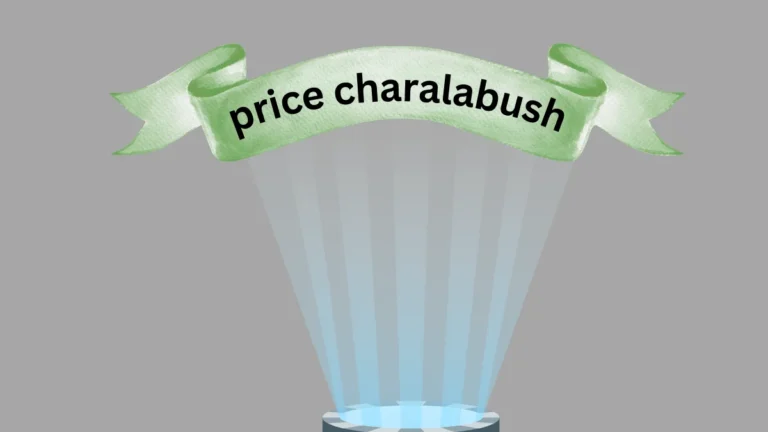Introduction:
The price of Charalabush Price, a unique and highly sought-after commodity, has been steadily gaining attention in recent years. As demand for this product continues to rise, many are curious about the factors that contribute to its price fluctuations. In this article, we will explore the key aspects that determine Charalabush’s price in the market, including its rarity, production costs, and market trends. Understanding these factors can provide valuable insight for both consumers and investors in this growing sector.
1. The Rarity of Charalabush: A Key Price Driver
Charalabush Price, though not widely known, has captivated a niche market due to its rarity. The limited availability of this product plays a significant role in determining its price. As with many rare commodities, scarcity increases its value. The difficulty in sourcing Charalabush from its natural habitats or controlled environments further contributes to its high cost. Additionally, the time and effort required for its cultivation and collection make it a labor-intensive product, driving the price even higher. Whether it’s due to its specific growing conditions or limited geographic range, the rarity of Charalabush ensures it remains a premium item within certain industries.
2. Production and Harvesting Costs: The Labor Behind the Price Tag
The production of Charalabush is a complex and resource-intensive process, with harvesting costs being a significant factor in the final price. The cultivation of Charalabush requires specialized knowledge and the use of specific agricultural methods, often demanding higher skill levels and longer labor hours than conventional crops. Moreover, the tools and technology needed to optimize its growth and harvest further contribute to the overall production costs. These factors are reflected in the price consumers pay, with the high labor intensity and specialized production techniques creating an economic ecosystem that pushes prices upward. The cost of land, labor, and technology involved in Charalabush production can fluctuate based on regional factors, influencing market prices seasonally or annually.
3. Market Demand and Trends: The Impact of Consumer Interest

Market demand plays a crucial role in shaping the price of Charalabush. As consumer interest rises, whether due to new applications in industries like pharmaceuticals, wellness, or alternative medicine, the market for Charalabush grows. This increased demand typically leads to price hikes as businesses seek to capitalize on the trend. However, if interest wanes or if alternative products become more popular, prices could stabilize or drop. Monitoring consumer behavior and emerging trends is essential for predicting price movements. The marketing strategies adopted by companies, such as product promotion or partnerships with influencers, can also create shifts in consumer demand, ultimately influencing the price point for Charalabush.
4. Environmental and Climatic Conditions: The Role of Nature in Pricing
The environmental conditions under which Charalabush is grown are a major factor in its price. Natural elements such as climate, soil quality, and water availability play a vital role in determining the yield and quality of the product. Adverse weather conditions, like droughts, floods, or unexpected seasonal shifts, can negatively impact the growth of Charalabush, leading to reduced supply and higher prices. Similarly, environmental sustainability practices are becoming more important in the agricultural sector, and the implementation of such practices can raise production costs. When producers have to invest in sustainable methods to ensure a steady supply of Charalabush, those costs are transferred to the consumer in the form of higher prices.
5. Geographic Variations in Price: Regional Differences and Market Accessibility
The price of Charalabush can also vary significantly depending on its geographic location. These geographic differences emphasize the importance of location in determining the final cost for consumers and can provide opportunities for savvy buyers to find competitive pricing in certain regions.
Conclusion:
The price of Charalabush is influenced by a variety of factors, including its rarity, production costs, market demand, environmental conditions, and geographic variations. Each of these elements plays a significant role in shaping its final price on the market. Understanding these dynamics is essential for anyone looking to invest in or purchase Charalabush, as it provides a clearer picture of the economic and environmental influences at play. As consumer interest in this unique commodity continues to evolve, the future of Charalabush pricing will likely experience further fluctuations, driven by both market forces and natural factors.
